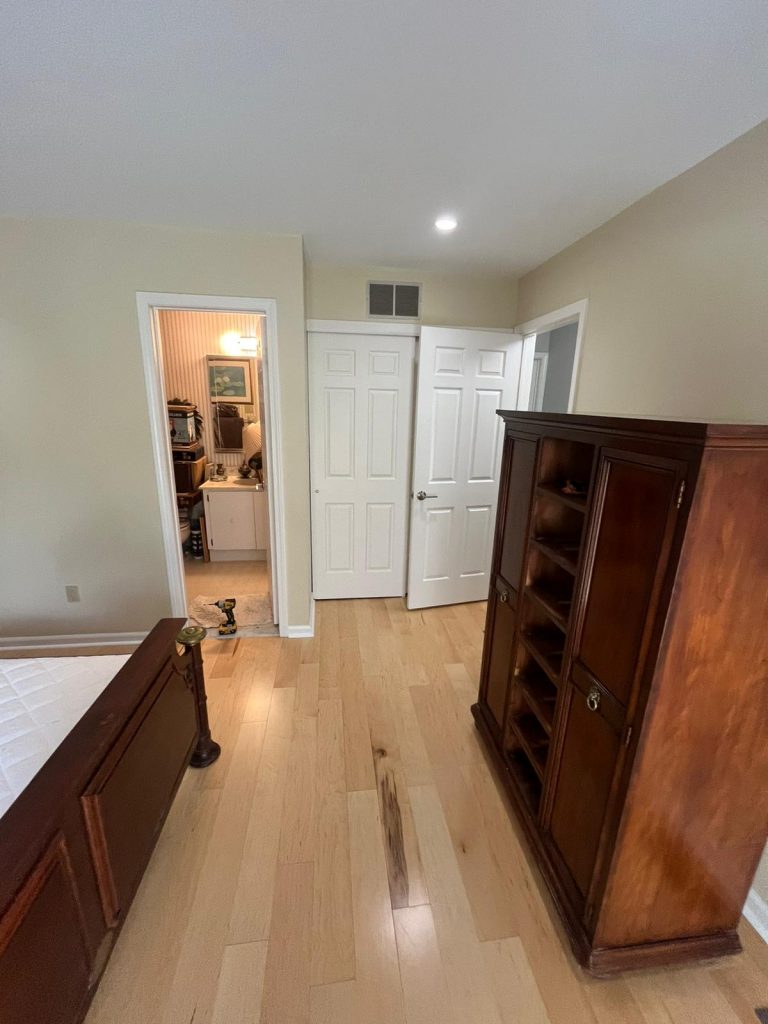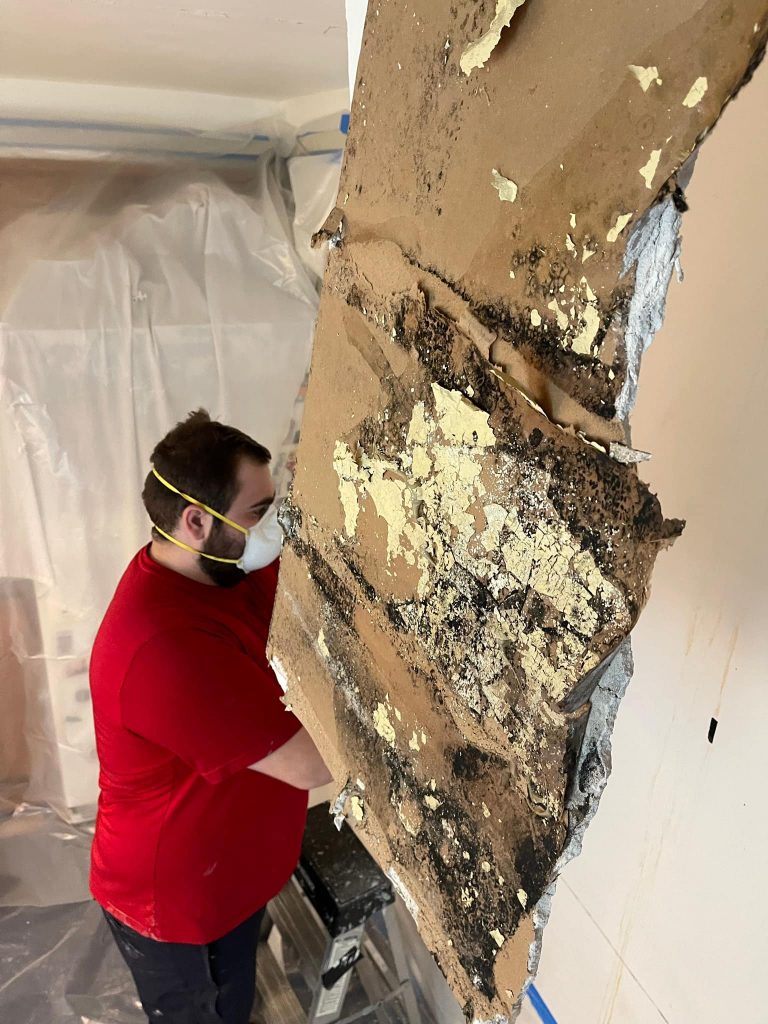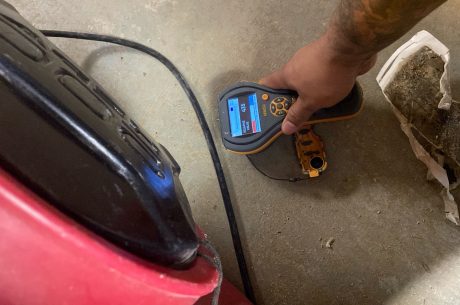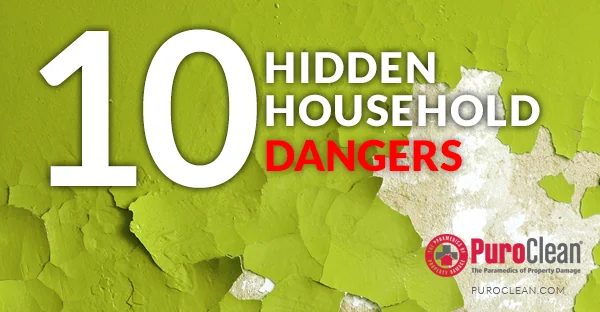Table of Contents
Indoor air quality for homeowners: Mold is more than just an unsightly nuisance, it’s a silent intruder that can wreak havoc on your home’s indoor air quality and, ultimately, your health.
Often hidden in plain sight, mold thrives in damp, dark environments and can spread rapidly if left unchecked. The consequences of ignoring mold growth can range from musty odors and structural damage to serious respiratory issues and allergies.

The key to preventing mold from ruining your home’s indoor air quality is early detection. By learning how to spot the signs of mold and taking proactive measures, you can protect your home and your family. In this comprehensive guide, we’ll explore how to identify mold, understand its causes, and take steps to eliminate it before it becomes a major problem.
For immediate assistance with Mold restoration, contact PuroClean of Plymouth Meeting, or Call (484) 412-4422
What Is Mold and Why Is It Dangerous?
Mold is a type of fungus that grows in multicellular filaments called hyphae. It reproduces by releasing spores into the air, which can easily spread throughout your home. While mold plays a vital role in nature by breaking down organic matter, it becomes a problem when it grows indoors.
Mold thrives in environments with moisture, warmth, and organic material to feed on. Common household materials like wood, drywall, carpet, and insulation provide the perfect food source for mold. Once it takes hold, mold can release spores and mycotoxins into the air, which can compromise your indoor air quality and lead to health issues such as:
- Allergic reactions (sneezing, runny nose, itchy eyes)
- Respiratory problems (coughing, wheezing, asthma attacks)
- Skin irritation
- Headaches and fatigue
- Long-term exposure to toxic molds like Stachybotrys (black mold) can cause more severe health problems
Common Signs of Mold in Your Home
According to mayo clinic website, spotting mold early is crucial to preventing it from spreading and affecting your indoor air quality. Here are some common signs to watch for:
1. Musty Odors
One of the first indicators of mold is a persistent musty or earthy smell. If you notice an unusual odor in certain areas of your home, especially in basements, bathrooms, or laundry rooms, it could be a sign of hidden mold growth.
2. Visible Mold Growth
Mold can appear in various colors, including black, green, white, or even orange. It often looks like spots, streaks, or fuzzy patches on walls, ceilings, or other surfaces. Pay close attention to areas prone to moisture, such as:
- Bathrooms (around sinks, showers, and tubs)
- Kitchens (under sinks, near dishwashers)
- Basements and crawl spaces
- Around windows and doors
3. Water Damage or Stains
Water stains or discoloration on walls, ceilings, or floors are a red flag for potential mold growth. Even if you don’t see mold, these stains indicate moisture problems that can lead to mold if not addressed.
4. Peeling or Bubbling Paint/Wallpaper
Moisture from mold growth can cause paint or wallpaper to peel, bubble, or crack. If you notice these issues, investigate further to determine if mold is the culprit.
5. Condensation and Humidity
Excessive condensation on windows, pipes, or walls can create the perfect environment for mold. High humidity levels (above 60%) also encourage mold growth. Use a hygrometer to monitor humidity levels in your home.
6. Health Symptoms
If you or your family members experience unexplained allergies, respiratory issues, or skin irritation that improve when you leave the house, it could be a sign of mold affecting your indoor air quality.
Where to Look for Hidden Mold
Mold doesn’t always grow in visible areas. It can hide in places you might not think to check. Here are some common hiding spots:
- Behind Walls and Ceilings: Leaky pipes or roof leaks can cause mold to grow inside walls or above ceilings.
- Under Carpets and Flooring: Spills or flooding can lead to mold growth beneath carpets, tiles, or hardwood floors.
- In HVAC Systems: Mold can grow in air ducts, filters, or drip pans, spreading spores throughout your home.
- Attics and Crawl Spaces: Poor ventilation and roof leaks can create ideal conditions for mold in these areas.
- Behind Appliances: Check behind refrigerators, washing machines, and dishwashers for moisture and mold.
How to Test for Mold
If you suspect mold but can’t see it, there are several ways to test for its presence:
- DIY Mold Test Kits: These kits are available at hardware stores and allow you to collect air or surface samples to send to a lab for analysis.
- Professional Mold Inspection: For a thorough assessment, hire a certified mold inspector who can use specialized tools like moisture meters and infrared cameras to detect hidden mold.
- Air Quality Testing: This measures the concentration of mold spores in your home’s air and can identify the types of mold present.

How to Prevent Mold Growth
Preventing mold is easier than dealing with its aftermath. Here are some practical tips to keep your home mold-free:
- Control Moisture Levels:
- Use dehumidifiers in damp areas like basements and bathrooms.
- Fix leaks in roofs, pipes, and windows immediately.
- Ensure proper drainage around your home’s foundation.
- Improve Ventilation:
- Use exhaust fans in bathrooms and kitchens to reduce humidity.
- Open windows when weather permits to increase airflow.
- Clean and Dry Spills Quickly:
- Address water spills or flooding within 24-48 hours to prevent mold growth.
- Dry carpets, furniture, and other materials thoroughly.
- Use Mold-Resistant Products:
- Consider mold-resistant drywall, paint, and insulation in moisture-prone areas.
- Regular Maintenance:
- Clean gutters and downspouts to prevent water buildup.
- Inspect your home regularly for signs of leaks or water damage.
How to Remove Mold Safely
If you discover mold in your home, it’s important to remove it safely to avoid spreading spores. Here’s how:
- Small Areas (Less than 10 Square Feet):
- Wear protective gear (gloves, mask, goggles).
- Use a mixture of water and detergent or a commercial mold cleaner to scrub the affected area.
- Dry the area completely to prevent regrowth.
- Large Areas or Hidden Mold:
- For extensive mold growth or mold in HVAC systems, hire a professional mold remediation company.
- Professionals have the tools and expertise to safely remove mold and restore your home’s air quality.
The Importance of Addressing Mold Quickly
Ignoring mold can have serious consequences for your home and health. Mold spores can spread rapidly, contaminating your indoor air and causing structural damage to your home. Prolonged exposure to mold can also lead to chronic health issues, especially for vulnerable individuals like children, the elderly, and those with respiratory conditions.
By staying vigilant and addressing mold issues as soon as they arise, you can protect your home’s indoor air quality and ensure a safe, healthy living environment for your family.

Conclusion
Mold is a persistent and potentially dangerous problem that can compromise your home’s indoor air quality if left unchecked.
By learning how to spot the signs of mold, understanding its causes, and taking proactive steps to prevent and remove it, you can safeguard your home and your health. Remember, early detection is key—don’t wait until mold becomes a major issue. Take action today to keep your home mold-free and your indoor air clean and fresh.
Protect Your Investment & Restore Your Peace of Mind
Don’t let water damage and potential mold growth overwhelm you. Contact PuroClean of Plymouth Meeting today at (484) 412-4422 for a free consultation. We’ll be there to guide you through the restoration process and ensure your property is restored quickly, safely, and efficiently.



 PuroClean of Plymouth Meeting
PuroClean of Plymouth Meeting